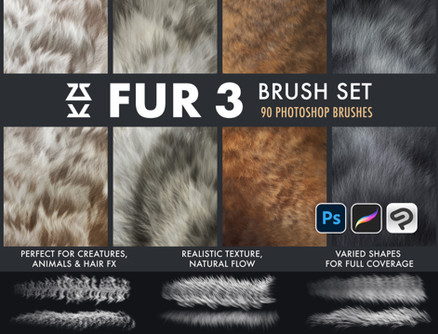HOME | DD
 CGCookie — Fundamentals: Value Shading Demo
CGCookie — Fundamentals: Value Shading Demo

Published: 2013-01-31 22:23:23 +0000 UTC; Views: 65059; Favourites: 2096; Downloads: 2078
Redirect to original
Description
Just starting out in digital painting? Check out our new Fundamental tutorials, starting with Value Shading with exercise sheets: [link]Related content
Comments: 31

👍: 0 ⏩: 0

Great tutorials thank you! I've been meaning to go through and try them.
👍: 0 ⏩: 1

its really Helpful , thn u soo much for sharing these..
👍: 0 ⏩: 1

Thank you for checking them out!
👍: 0 ⏩: 0

is this step work to paint color .. using same process white for light black grey for shades
👍: 0 ⏩: 1

You should avoid using just whites and black shades for lighting and shadows. Try bending your hues towards yellow for lighting and purple for shadows.
👍: 0 ⏩: 1

, am practicing this techniques i used to put black for shadows and white for lights i always see my painting has no life ,, am now studying color wheels and colors i hope this will make different .. i am really exited to paint like other artists i know it's not going to be easy or one step ..
i will try my best ,, thank you very much ,,
👍: 0 ⏩: 1

If you want some more help with color balancing with lights and shadows here are a few tuts that may help!
Color Basics: cgcookie.com/concept/lessons/7…
Lighting Direction Exercise: cgcookie.com/concept/2013/09/1…
👍: 0 ⏩: 0

Thanks for doing this tut! Really helpful indeed
👍: 0 ⏩: 0

You must keep in mind that the drop shadow does not reflect as much light as the ground around it, so parts of the objects should not be quite as brightly lit as they are shown here. 
👍: 0 ⏩: 0

What material are the spheres imagined to be made of? I ask because the specular highlight is a bit hard to work out. It kind of looks like it has both pinpoint and diffuse specular highlights -- does that happen much in life? I would have thought not, unless the object is shiny and also reflecting the 'halo' around the lightsource. But this looks pretty diffuse rather than shiny.
The only way I can think that might make a light pattern like that is if the light source is quite close (and large), so the fall-off from distance is a stronger factor than the inclination of the plane to the light, and there'd have to be a load of ambient light. Fall-off from turning form isn't as linear as you have it here (see also figures 2 and 3 here ).
Whichever way you slice it, the specular highlight is in the wrong place. (At least, I can't think of how I could light a ball such that it would make that shading with that specular highlight.) The short reason is that specular highlights are almost never in the area of full light -- they're slightly to the side, closer to us. The longer explanation is 'angle of incidence = angle of reflectance' -- in other words, specular highlights happen when the angle of the light hitting the sphere and the angle of it bouncing into your eye are the same. Figure 1 goes into more detail. Here, it looks like the light is about 60˚ up and maybe 45˚ to camera left... I did a quick plan sketch to check the angles and it seems to fit with my photographer's instinct.
Given both the specular highlight and the fall-off thing aren't quite right, maybe you're using one of the traditional methods (like Loomis)? They get it a little wrong. See figure 2.3 here for a more detailed explanation about why they're incorrect. (Also, the next page has a fun interactive diagram that shows where the specular would be for a given light direction.)
(Sorry this comment was a bit overly technical-babble-y -- I prefer to avoid using technical words, but sometimes nothing else is precise enough without being super wordy.)
👍: 0 ⏩: 0

this is absolutely awesome!
thank you so much for posting this!
👍: 0 ⏩: 1

Some parts made more sense after the video. Thanks for sharing all these tutorials !
👍: 0 ⏩: 1

Hope this will help you in the future
👍: 0 ⏩: 0

For the starting out artist, this works awesome keep up the art techniques tutorials.
👍: 0 ⏩: 1

I wish I understood values better ._. even with all the tutorials out there it makes no sense to me. My brain just doesn't comprehend where the light should and shouldn't touch. I think I just need to take a few life art classes
👍: 0 ⏩: 1

Life Drawing classes were my favorite in school!
👍: 0 ⏩: 0

Ty this was really helpfull
Like the little bit light in the shade area
👍: 0 ⏩: 1

Bounce lighting is such an awesome area that many can forget, but it's one of my favorites to add in!
👍: 0 ⏩: 0




































